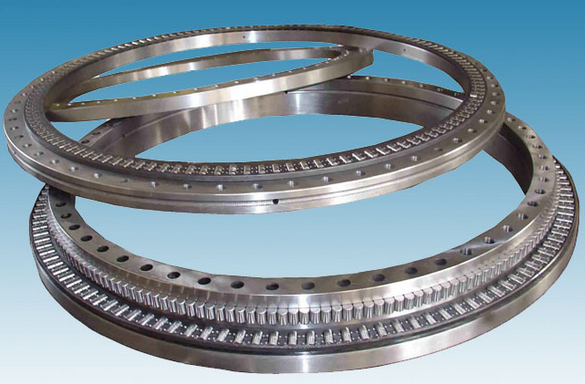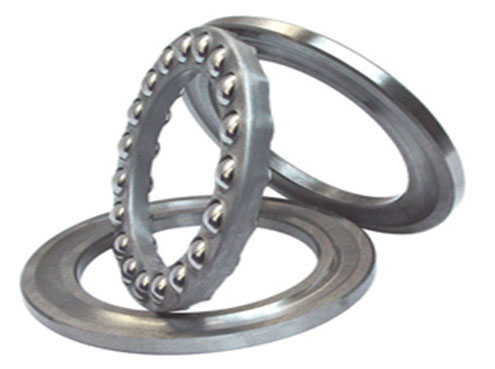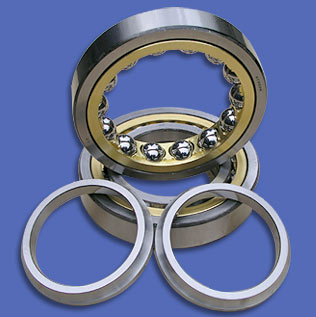Tapered roller bearings are separable bearings, where the inner components (composed of rollers, cages, and inner rings) and outer rings can be separated. Therefore, it can be easily installed on the journal and bearing seat.
Tapered roller bearings are suitable for bearing radial loads, unidirectional axial loads, and combined radial and axial loads. The axial load capacity of tapered roller bearings depends on the contact angle α, I.e. outer race angle, contact angle α The larger the load, the greater the axial load capacity.
Generally, tapered roller bearings do not allow for angular errors, but the surfaces of the rollers and raceways can be specially designed to allow for angular errors of 2 'to 4'.
In addition to the metric series, the manufactured tapered roller bearings also have the English series. The designation and dimensions of the metric series comply with the provisions of IS355:1977 (E) standard, while the English series comply with the provisions of AFBMA standard.
According to the number of roller rows, tapered roller bearings have different structural forms such as single row, double row, and four row.
Single row tapered roller bearing
Single row tapered roller bearings can withstand axial loads in one direction. And can limit the axial displacement of the shaft in one direction relative to the bearing seat. Even under pure radial load, additional axial force will be generated inside the tapered roller bearing, and an equal amount of reverse force is required to balance it. Usually, two single row tapered roller bearings with the same structure are installed face to face or back to back in two supports.
Single row tapered roller bearings can also be used in paired configurations, such as face-to-face or back-to-back configurations.
Tapered roller bearings with stop edges, outer ring with stop edges, and inner components are the same as those of single row tapered roller bearings. Tapered roller bearings with stop edges can be axially positioned in the bearing seat and simplify the configuration design of the bearing and the structure of the bearing seat.
Double row tapered roller bearings can withstand both radial and bidirectional axial loads. The clearance has been adjusted before the product leaves the factory, so it can be directly installed and used without the need to adjust the clearance. Double row tapered roller bearings can limit the axial displacement of the bearing in both directions relative to the bearing seat within the axial clearance range of the bearing.
Double row tapered roller bearings come in back-to-back and face-to-face configurations.
The performance of four row tapered roller bearings is basically the same as that of double row tapered roller bearings, but they have a greater ability to withstand radial loads than double row tapered roller bearings. The limit speed is relatively low, mainly used for heavy machinery, such as steel rolling mills.
Other structural forms of cylindrical roller bearings can also be provided, such as single row tapered roller bearings without inner or outer rings, sealed tapered roller bearings, and various other products.
Holder
Tapered roller bearings generally use steel plate stamped cages, or cages equipped with glass fiber reinforced nylon 66 can be provided. Larger tapered roller bearing cages can also use welded solid cages made of steel pillars.
In order to ensure good operation of bearings, tapered roller bearings, like other ball and roller bearings, must apply a certain amount of minimum load, especially when working at high speeds, high accelerations, or under conditions with frequent changes in load direction. Because of these operating conditions, the inertia force of the roller and cage, as well as the friction inside the lubricant, will have a negative impact on the rolling and rotating accuracy of the bearing, and there may be harmful sliding motion between the roller and raceway that is harmful to the bearing.
The minimum load Fmin required for tapered roller bearings can be estimated using the following formula:
Fmin=0.02C
C - Basic rated dynamic load, KN
Starting at low temperatures or with high lubricant viscosity may require a larger minimum load. Usually, the weight of the bearing support itself, combined with the load borne by the bearing, has exceeded the minimum required load. If the minimum load has not yet been reached, such bearings must be subjected to additional radial loads, such as axial preloading, to meet the minimum load requirements.
The external dimensions of standard angle tapered roller bearings comply with the provisions of GB/T273.1 "General Plan for External Dimensions of Rolling Bearings," GB/T297 "External Dimensions of Rolling Bearings," GB/T299 "External Dimensions of Double row Tapered Roller Bearings," and GB/T300 "External Dimensions of Four row Tapered Roller Bearings," etc.
The tolerance of standard tapered rollers shall comply with the provisions of GB/T307.1 "Rolling bearings - Tolerances for radial bearings".
The clearance of tapered roller bearings and single row tapered roller bearings is obtained by adjusting the position of the outer ring and inner components in the axial direction during installation, as well as another position used to provide reverse axial positioning of the bearing. When adjusting the clearance, the bearing must be rotated multiple times to ensure good contact between the roller and the inner ring guide edge. The clearance value can be selected by the customer according to different operating conditions of the bearing. However, when selecting clearance, it should be noted that excessive clearance will weaken the bearing's load-bearing capacity, while too small clearance will lead to excessive friction and an increase in operating temperature. The optimal adjustment of the clearance value can be determined based on low bearing operating temperature, low vibration, and high rotational accuracy.
The equivalent dynamic load of tapered roller bearings is calculated according to Table 1 for different structures:
Table 1
Equivalent dynamic load of bearing structure
Single row tapered roller bearing Fa/Fr ≤ e P=Fr
Fa/Fr>e P=0.4Fr+YFa
Additional axial component S=Fr/2Y
Paired installation of single row tapered roller bearings
(Face to face or back to back configuration) Fa/Fr ≤ e P=Fr+Y1Fa
Fa/Fr>e P=0 67Fr+Y2Fa
Double or four row tapered roller bearings
Fa/Fr ≤ e P=Fr+Y1Fa
Fa/Fr>e P=0.67Fr+Y2Fa
Equivalent static load
The equivalent static load of tapered roller bearings is calculated based on different structures as shown in Table 2:
Table 2
Equivalent dynamic load of bearing structure
Single row tapered roller bearings generally P0=0.5Fr+YoFa
P0 < Fr P0=Fr
Paired installation of single row tapered roller bearings
(Face to face or back to back configuration) General P0=Fr+YoFa
P0 < Fr P0=Fr
Double or four row tapered roller bearings
General P0=Fr+YoFa
P0 < Fr P0=Fr
The calculation coefficients e, Y, Y1, Y2, and Y0 in the table are selected from the bearing size table.





